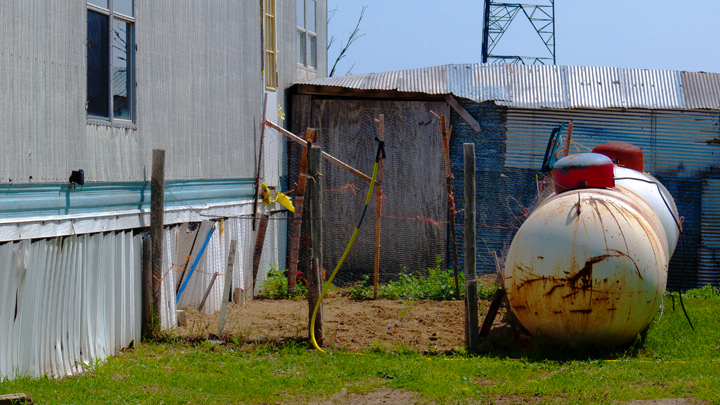
One of the fascinating things about photography is the way it engages the mind. While there are a number of reasons images attract and hold our attention, or fail to, pattern recognition, if it is there or not, is almost always essential. We recognize familiar shapes, familiar patterns, familiar collections of colors, textures, faces, expressions. It's part of how we make sense of our world. Recognizing what does or doesn't fit with the familiar is what gives significance to photographs. And it isn't just what's inside a photograph that connects with what we know. It's also the context in which we view it. An image framed and hung in a gallery takes on a different meaning than if the same image is used in an ad, posted to Facebook, or found in a shoebox at a garage sale. It's also true that, internal to any image, organization works to both attract and focus our attention. There is cropping or framing to limit our gaze. There is point of view created by the angle of sight and distance from the subject, i.e. close up or far away. And there is composition that relates internal elements to each other and to the proportions of the frame. Most of the time, however, image organization is not the purpose of the image, but the device by which its subject is revealed to us. The photographer may not even realize how he or she is using image organization in the making of his or her photographs. Regular viewers, however, may recognize such tendencies as characteristic style. The image above was not created with any particular forethought. It was seen and rendered rather intuitively. In looking at it later, I noticed things. For one, I realized what I'd actually photographed was a small garden in the making, earth turned and cleared ready for seed, fenced off with nylon mesh to keep intruders out. Quaint. I then noticed something interesting. I noticed the organization of the image. I noticed a pattern of interlocking L's. And then I noticed L's were everywhere in the image, making up panels on the walls, window frames and shadows, triangles and rectangles, roof lines and grass lines, even the texture of the corrugation. Then I noticed that right there in the midst of all those interlocking L's was a circle and the French curve of a piece of yellow hose echoed in distortions of the corrugation. A complete contrast to all the rest. How strange, strange that it all seemed to work together. And how strange that without even intending to, some part of this photographer's brain perceived that scene as organizable in that particular way, and then proceeded to fix that organization in a photograph. It's virtually certain not every photographer would perceive and organize that particular scene in quite that way. The question now is: does anyone else see what I see in the image above? And if so, doesn't it make you curious about our brains, about how we perceive and make sense of things? And about how we might get fooled or maybe sometimes delude ourselves just because the pieces of things seem to fit together nicely? May the garden of your thoughts be well grounded in things reliably real and not just fabricated upon arbitrarily interlocking pieces of information. |
• Posted: May 14, 2013 12:02:54
• Comments Welcome
• Vote CoolPhotoblogs
• Purchase a Print
• Share
Sunday, May 13th, 2012 Sawyer MI USA |